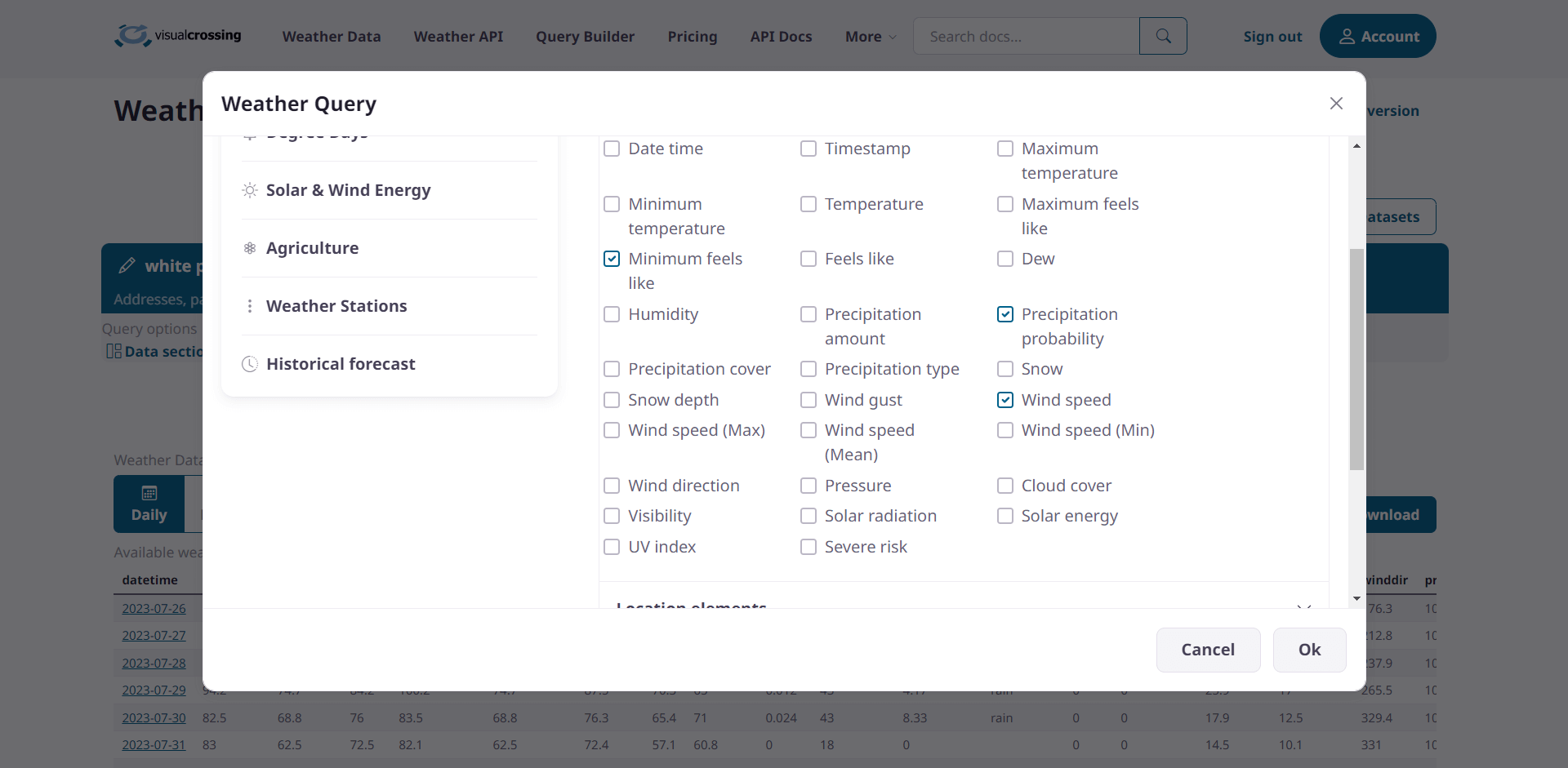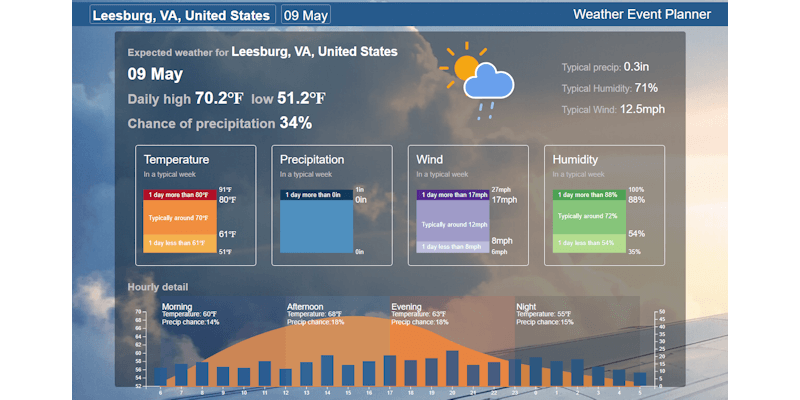Weather API Changelog
This article describes the major features added, and any change made, to the Timeline Weather API. None of the changes in this article break backwards compatibility. For full details of the Timeline Weather API, please see the API documentation. 2024 – Q1 Expanded historical data for the Advanced solar elements and wind elements back to …
Adding and Removing Elements from your Weather Query
The ability to add or remove elements from weather data or columns is incredibly useful in various scenarios. By using this capability, researchers, meteorologists, and data analysts can streamline their data sets for optimum performance and focus solely on the relevant information for their specific research or analysis. Removing unnecessary weather elements that do not …
Continue reading “Adding and Removing Elements from your Weather Query”
What is the difference between rain, sleet, snow and ice precipitation types?
The weather data returned by the Visual Crossing Weather API and Data Query Builder includes both the amount of precipitation and also the type of precipitation that occurred or is forecast to occur. In this article, we discuss the exact difference between the possible precipitation types that you may encounter. Where to find the precipitation …
Continue reading “What is the difference between rain, sleet, snow and ice precipitation types?”
Helping us help you – How to submit an actionable technical support case
The goal of this short article is to give you the tools to submit a technical support case that is actionable from the very first submission. This will help us provide the quickest and best response possible while minimizing the chance that we misunderstand your question or need to ask you for more information.
How your data is used within Visual Crossing
Your private and confidential data is a very important asset, and Visual Crossing takes great care to ensure that any confidential data entrusted to us stays completely confidential. A key tenet of our data protection regimen is that we always work with the minimum amount of confidential data possible and use it only for the …
Continue reading “How your data is used within Visual Crossing”
Requesting sub-hourly weather data using the Weather API
Sub-hourly historical weather data, or historical weather data with minute-by-minute resolution can be retrieved by users of the weather API. Please see the weather data editions page for details on which weather API plans include sub-hourly data access. Requests for sub-hourly data mirror the same requests for hourly or daily uses however there are some …
Continue reading “Requesting sub-hourly weather data using the Weather API”
Free Weather Tools and Dashboards
One this page you will find a list of our free weather tools and dashboards. These are all accessible without cost and typically without even needing to sign up for a Visual Crossing Weather account. (Of course, we highly recommend that you do sign up as some features are only accessible when logged into our …
Modifying the weather station search parameters
The Weather Data Downloads and Weather API retrieves historical weather data from ground based weather stations, in addition to remote dat The Weather Data Downloads and Weather API retrieves historical weather data from ground based weather stations, in addition to remote data such as satellite and radar. Where possible, we bias the results towards the …
Continue reading “Modifying the weather station search parameters”
How do I run a weather API query using HTTP POST?
While it is very easy to run weather queries using HTTP GET requests, there are times when it is preferable or even necessary to use HTTP POST requests instead. While HTTP POST requests are a little more complicated to configure and execute, they are well within the reach of any modern script or language. Also, …
Continue reading “How do I run a weather API query using HTTP POST?”
How to load weather data into a Juypter Notebook
This article describes how to create a new Jupyter notebook that retrieves weather data from the Visual Crossing Weather API. The example uses Python as development language but you can choose any language that Jupyter supports including C++ and R. JupyterLab is used to create the notebook. JupyterLab is a web-based interactive development environment for …
Continue reading “How to load weather data into a Juypter Notebook”






